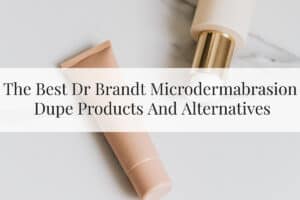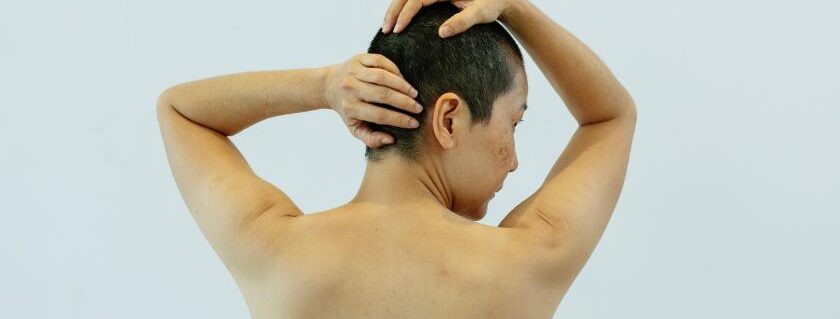
How To Get Rid Of Body Acne: Causes And Treatment

If you have been a victim of body acne, then you know that the little pesky spots, blackheads, and whiteheads can erupt on any part of the body, not just the face. Body acne, according to dermatologists, is the most common skin condition. It can appear as pimples, whiteheads, nodules, blackheads, cysts, and papules.
This skin condition can have a significant impact on one’s self-esteem and overall quality of life. While facial acne tends to steal the spotlight, the struggles faced by individuals dealing with body acne are no less real. These blemishes, ranging from small pimples to more stubborn cysts, can appear on the back, chest, shoulders, and even buttocks.
What is Body Acne?
Body acne is any type of breakout appearing on the upper half of the body or the back. They are accompanied by scarring or oily skin.
Although they can appear on any part of the body, back acne and chest acne are the most common, as this is where they appear in high concentrations. This is because, in these areas, there are more hair follicles [1] than those found on the face.
A high density of hair follicles traps dirt and oil, the culprit responsible for blocking pores and leading to breakouts. The treatment of back (bacne) and body acne often proves tough.
This is because of the logistics involved in treatment application, and the blemishes also tend to be deep and stubborn.
What Causes Body Breakout?
The factors responsible for facial pimples are blamed for body acne. These include excess dead skin cells, overactive oil glands, and acne-causing bacteria proliferation. Once dead skin cells and oil get trapped in the follicles, creating a blockage, a breakout develops. The blockage is what then develops into a blackhead. When germs and dirt invade this blackhead, inflamed pimples form.
The upper part of your body contains a high density of sebaceous glands, just like your face. It means that the follicles have a high potential of getting plugged with dead skin cells and sebum. Several other factors may contribute to body acne breakouts, including:
Hormonal Fluctuations
Hormonal imbalances, especially during puberty, can lead to an increase in oil production, clogging pores and fostering the growth of acne-causing bacteria. This often explains why body acne is most common during adolescence.
Hair Products
In your efforts to keep your hair clean, you could trigger a breakout. Shampoo and hair products running down your back as you clean your hair may clog pores, leading to stubborn pimples. It is essential that you rinse your hair to the side and take a quick bath after cleaning your hair to clear any lingering residue.
Sweat and Friction
Sweat from tight workout wear is a common contributor to body acne and even butt acne. Fabric that clings to the body traps bacteria, which can then lead to the clogging of pores and finally a pimple breakout. When this happens, you are likely to experience irritation from the rubbing of clothing. Choose loose-fitting workout gear. After your workout, take a shower and change into loose-fitting clothes.
Diet
A diet high in refined sugars and dairy has been linked to increased acne breakouts. Additionally, stress, lack of sleep, and poor skincare habits can all play a role in the development of body acne.
Home Remedies for Cystic Acne
Affecting at least 85 percent of people at some point, cystic body bumps are one of the most challenging skin conditions to treat.
Most conventional treatments tend to be expensive, and some present severe side effects, including redness and irritation.
This is why you might want to try the following natural home remedies that can fight acne and acne scars:
Apple Cider Vinegar: Apple cider vinegar contains organic acids that are excellent at fighting P. acnes.
Honey and Cinnamon Mask: These two contain antioxidants that can reduce pimples more quickly than even retinoids and benzoyl peroxide. This mask reduces inflammation and fights acne-causing bacteria.
Tea Tree Oil: Tea tree oil is excellent at reducing inflammation and fighting bacteria. It also contains excellent acne-removal properties.
Green Tea: This contains high amounts of antioxidants. It fights bacteria, reduces inflammation, and inhibits the growth of P. acnes.
Witch Hazel: This contains strong anti-inflammatory and anti-bacterial properties necessary for treating various skin conditions, including acne, eczema, burns, varicose veins, and dandruff.
Aloe Vera: Aloe vera contains sulfur and salicylic acid, which are necessary for reducing bumps. When applied to the skin, the aloe vera gel fights breakouts and inflammation, treats burns, and heals wounds.
2 Best Body Acne Remedies
Although the factors that cause facial acne are to blame for body breakouts, they are tougher to treat. Hair follicles are widely spaced, and the skin is more demanding, unlike in the face. This makes it harder for breakout removal products to penetrate.
Because the skin is hardy, it can tolerate potent treatments, which are often irritating to the face. Here are other treatments that can be used to control and treat body acne.
Over-the-Counter (OTC) Treatment
An acne cleanser or body wash may help to clear bumps. One containing benzoyl peroxide or salicylic acid should be a perfect choice. Use the body wash immediately after your workout or at least once daily. Medicated lotions and sprays can also help. They should contain either salicylic acid or benzoyl peroxide.
Generally, salicylic acid is best for blackheads, while benzoyl peroxide is effective in controlling inflamed pimples. If the location of the acne is hard to reach, you can use a spray. Neutrogena acne spray might help. Ensure the spray is dry before putting it on your clothes; otherwise, it could stain them.
Prescription Medication
Because body acne is severe, OTC options may not be effective. You will probably need stronger treatment to get them under control. If it is already inflamed, check with your dermatologist for treatment promptly.
Understand that severe inflammation can leave lasting scars on your body. Oral medications or topical treatments may be prescribed. Some of them include:
Oral antibiotics
Retinoids (e.g., Retin-A)
Isotretinoin (e.g., Accutane)
Because it is hard to treat body bumps, you might have to try different treatments before the right one for your condition is identified. After starting your treatment, there are several steps you need to observe to boost its effectiveness.
3 Tips After Starting Medication For Acne Treatment
Keep off Creamy Shower Gels
More than any other part of your body, your back has a high concentration of oil gland activity. Worse still, it is the area most people hardly clean thoroughly.
Because the area between shoulder blades is hidden and hard to reach, it becomes easy for oil, sweat, and dead skin to build up.
This causes clogging of the pores and a pimple breakout. Rather than using creamy shower gels and soaps, people dealing with acne are advised to use acne-fighting ingredients.
Choose a Hydrating Moisturizer
If you have acne-prone skin, moisturizing is perhaps a step you cannot skip. Little moisture on the skin can trigger the production of high amounts of sebum, which then clogs the pores. This happens in an effort to keep the skin hydrated.
The right moisturizer should protect the follicles by preventing the penetration of acne-causing irritants and bacteria. Be careful not to purchase moisturizers designed for dry skin. With skin that is prone to acne, you would want to keep the oil balanced and the skin hydrated.
Do not Pop or Squeeze the Pimples
Just as is the case with facial pimples, do not pop breakouts on your body. This would only lead to more inflammation and scarring.
It takes commitment and effort to clear facial and body acne, so be patient. Consistency is needed in your body’s acne treatment routine to clear the breakout completely. If you feel like your OTC products or home remedies are not working, talk to your dermatologist for advanced treatment.
Frequently Asked Questions
Is body acne more common in certain age groups?
Body acne can affect individuals of all ages, but it is often more prevalent during puberty due to hormonal changes.
Can diet really impact body acne?
Yes, studies suggest that diets high in refined sugars and dairy may contribute to acne breakouts.
When should I consult a dermatologist for my body acne?
If over-the-counter treatments prove ineffective or if you have severe acne, it’s best to seek professional guidance.
Are natural remedies effective in treating body acne?
While some natural ingredients may offer benefits, it’s essential to consult a dermatologist for evidence-based treatments.
How long does it take to see improvements in body acne?
Results vary from person to person, but consistent skincare and lifestyle changes can lead to visible improvements within a few weeks.
Conclusion
As you embark on your journey towards clearer skin, remember that achieving noticeable results takes time and dedication. By understanding the causes, implementing preventative measures, and adopting an effective skincare routine, you can take control of your body acne and restore your confidence.
Even though you might think that facial acne is more common and perhaps more demanding to treat, your body is just as important. Make sure to carefully follow these home remedies and tips after starting medication for body acne treatment to optimize the results.
Also, check out the other comparison review I did below for more options on facial care procedures:
Popular Articles:



The Best Dr Brandt Microdermabrasion Dupe Products And Alternatives

Microdermabrasion For Sensitive Skin: How To Prepare For A Gentle Treatment

Microdermabrasion For Pores: 3 Incredible Ways It Helps Your Skin

Microdermabrasion For Buttocks: Understanding How Its Magic Works






